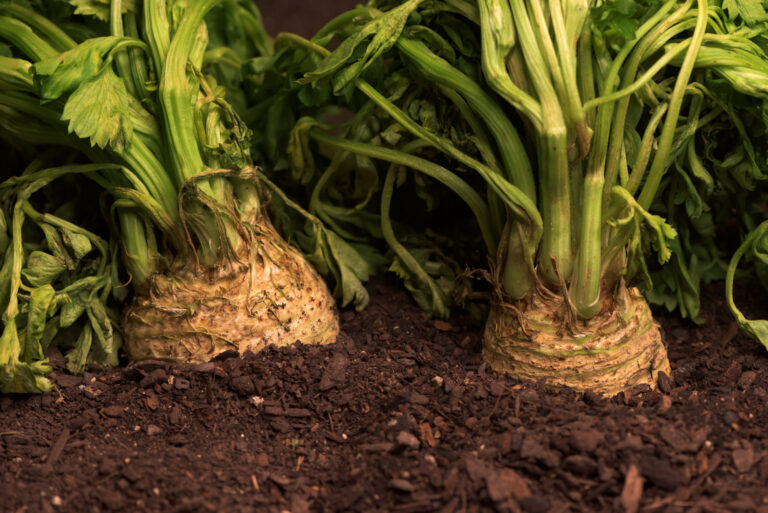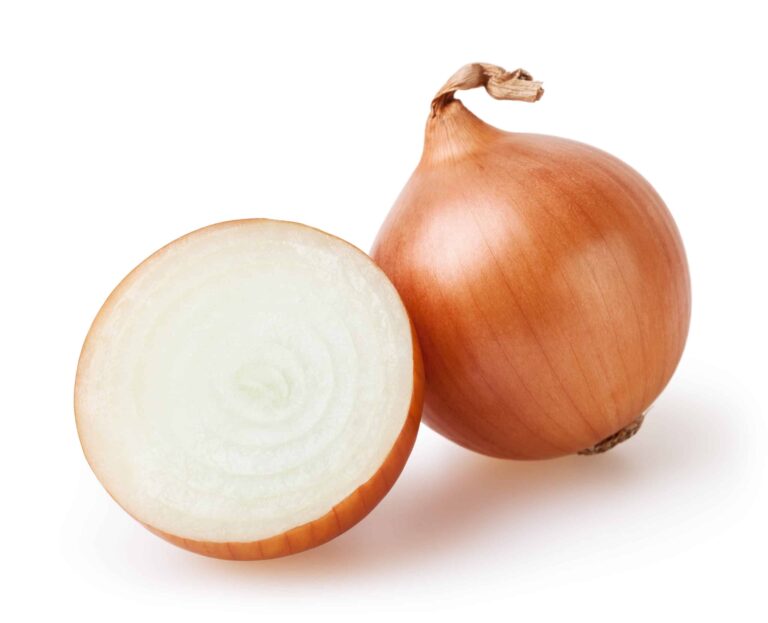Elephant Garlic: Tips for Planting and Harvesting Giant Bulbs
Elephant garlic (Allium ampeloprasum) isn’t true garlic—it’s more closely related to leeks—but it produces impressively large, mild-flavored bulbs. Over my 30+ years of gardening, I’ve grown elephant garlic in both Sonoma Valley and California’s Central Valley, and it’s always a showstopper in the garden and kitchen.
In this guide, I’ll share my best tips for planting, caring for, and harvesting giant elephant garlic bulbs.
What Makes Elephant Garlic Special?
- Bulb Size: Can weigh up to 1 pound each—much larger than typical garlic.
- Flavor: Mild and sweet, great for roasting and slicing raw.
- Clove Count: Fewer, much larger cloves per bulb (3–6).
- Storage: Keeps for 3–6 months, shorter than softneck garlic.
🌱 Gardener’s tip: Elephant garlic is perfect for gardeners seeking a mild garlic flavor or large bulbs for culinary use.
Planting Elephant Garlic
- Timing: Plant in fall, 4–6 weeks before the first hard frost.
- Soil: Loose, well-drained soil rich in organic matter. pH 6.0–7.0 is ideal.
- Spacing: Plant cloves 8–12 inches apart, rows 18–24 inches apart, to accommodate giant bulbs.
- Depth: Plant cloves 2 inches deep with the pointed end up.
Caring for Elephant Garlic
- Watering: Keep soil consistently moist, especially during bulb formation. Avoid waterlogging to prevent rot.
- Feeding: Apply a balanced organic fertilizer or compost mid-season.
- Mulching: Helps regulate soil temperature and retain moisture through winter.
- Pests & Diseases: Monitor for onion thrips, white rot, and fungal issues. Rotate crops every 3–4 years.
Harvesting Elephant Garlic
- When: Early to mid-summer, when the lower 1/3 of the leaves turn yellow-brown.
- Method: Loosen soil gently with a fork and lift bulbs carefully to avoid damage.
- Curing: Hang in a ventilated, dry space for 2–3 weeks before storage.
🌱 Tip from my garden: Elephant garlic scapes can be harvested like hardneck garlic scapes; they are tender and flavorful.
My Experience
Elephant garlic is a fantastic choice for home gardeners who want dramatic-sized bulbs and a milder garlic flavor. Follow proper planting, spacing, and care practices, and you’ll enjoy a harvest of giant, flavorful bulbs year after year.
Elephant Garlic Scapes: How to Harvest and Use Them
Meta description (20 words): Learn when and how to harvest elephant garlic scapes and enjoy their mild, tender flavor in a variety of recipes.
Elephant garlic scapes are the curly, tender flower stalks that appear in late spring. While elephant garlic is milder than true garlic, its scapes carry a delicate, sweet garlic flavor perfect for early-season cooking.
After decades of growing elephant garlic, I’ve learned that harvesting scapes at the right time not only gives a delicious ingredient but also encourages larger bulbs at harvest.
Why Harvest Elephant Garlic Scapes?
- Redirects Energy to Bulbs: Removing scapes allows the plant to focus on enlarging the bulb.
- Edible Early Crop: Scapes appear weeks before the bulbs are ready.
- Mild, Delicious Flavor: Great for cooking raw or lightly sautéed.
🌱 Tip: Elephant garlic scapes are milder than Rocambole scapes, making them ideal for salads and pesto.
When to Harvest
- Look for long, curly scapes that have not yet hardened.
- Typically 2–3 weeks before bulb harvest, when leaves begin to yellow.
- Cut scapes at the base, leaving the plant intact.
How to Use Elephant Garlic Scapes
- Pesto: Blend with olive oil, nuts, and Parmesan.
- Stir-Fries: Slice thinly and sauté with vegetables or meats.
- Roasting/Grilling: Toss with oil and roast for a mellow, sweet flavor.
- Pickling: Quick-pickle for crunchy, flavorful snacks.
- Raw: Chop finely for salads or sandwiches.
Storing Scapes
- Refrigerate: Store up to 2 weeks in a perforated bag.
- Freeze: Blanch and freeze for later use.
- Pickle: Preserves flavor for months.
Gardener’s Note
Harvesting scapes is a simple, rewarding step. In my Sonoma Valley garden, it consistently results in larger elephant garlic bulbs while giving me early spring ingredients for the kitchen.
🌱 Bottom line: Don’t let elephant garlic scapes go to flower—harvest them for both flavor and bigger bulbs.
Garlic Growing Hub
Start here: The Ultimate Garlic Growing Guide: From Seed to Harvest
🌱 Garlic Planting & Timing Clusters
- Garlic Plant Starting Tips: How to Get Going
- When to Plant Garlic: Fall vs. Spring Compared
- Garlic Planting Calendar by Zone (Month-by-Month Guide)
- Ideal Soil Temperature for Planting Garlic and Why It Matters
- Climate Guide: Growing Garlic in Warm vs. Cold Regions
🧄 Garlic Types & Varieties Clusters
- Softneck vs. Hardneck Garlic: Key Differences for Gardeners
- Best Softneck Garlic Varieties for Home Gardens
- Best Hardneck Garlic Varieties for Flavor and Storage
- Rocambole Garlic: What It Is and How to Grow It
- Elephant Garlic: Tips for Planting and Harvesting Giant Bulbs
🌿 Growing & Care Clusters
- Proper Garlic Spacing for Bigger Bulbs
- How to Water Garlic the Right Way
- Fertilizing Garlic: Feeding Tips Bigger, Healthier Bulbs
- Essential Garlic Care: From Planting to Harvest
- Best Companion Plants for Garlic (And What to Avoid)
- How to Grow Garlic in Containers: Step-by-Step Guide
🐛 Pests & Disease Clusters
🌾 Harvest & Storage Clusters
- How to Tell When Garlic Is Ready to Harvest
- How to Harvest and Store Garlic
- How to Cure Garlic for Long-Term Storage
- Best Ways to Store and Preserve Garlic at Home
🍳 Kitchen & Use Clusters
- Garlic Cooking and Severing Ideas for Your Harvest Table
- Fresh Garlic vs. Stored Garlic: Flavor and Cooking Differences
- Garlic Scapes: What They Are and How to Use Them
- Leeks vs. Green Onions vs. Garlic: What’s the Difference







